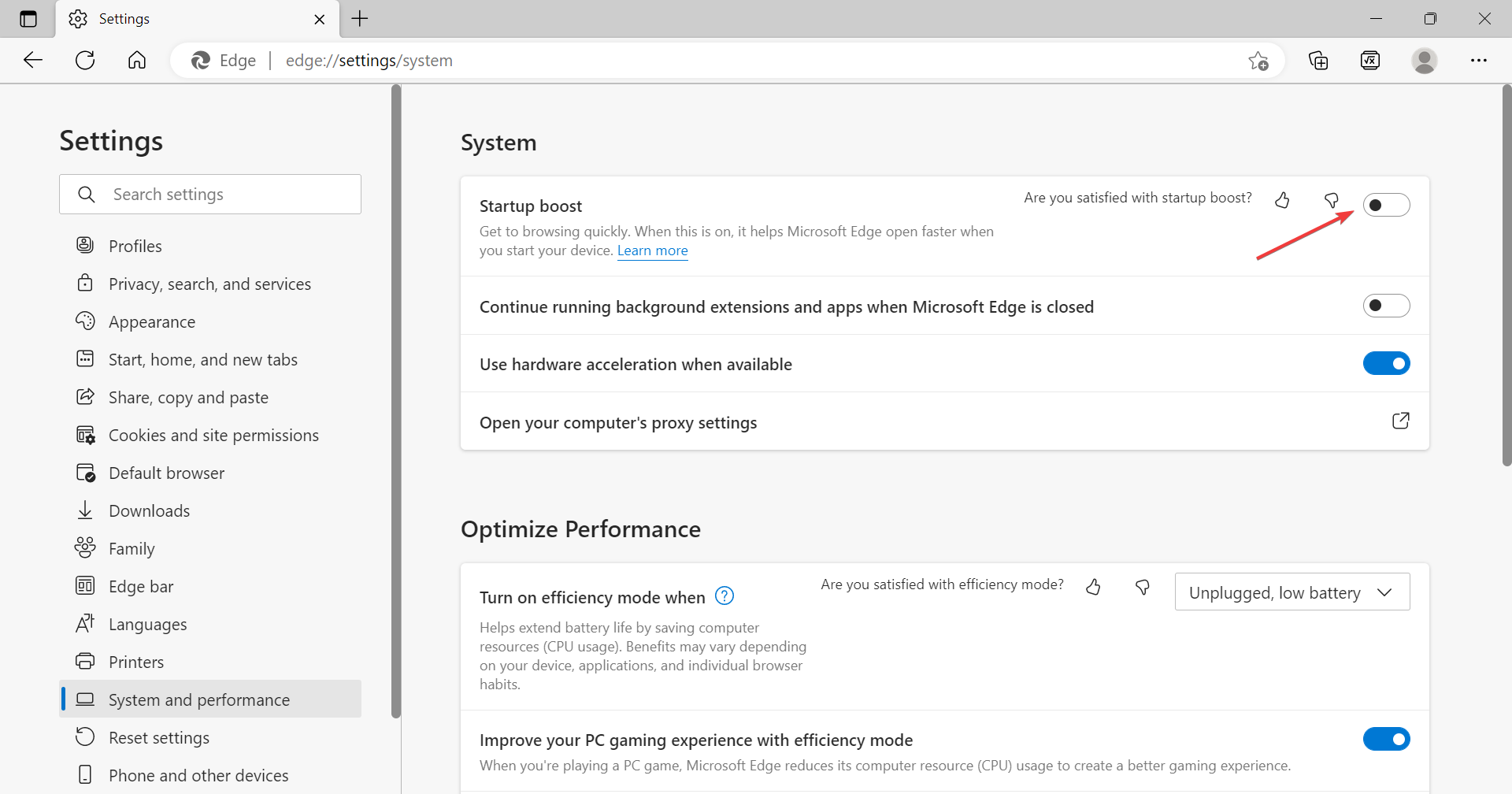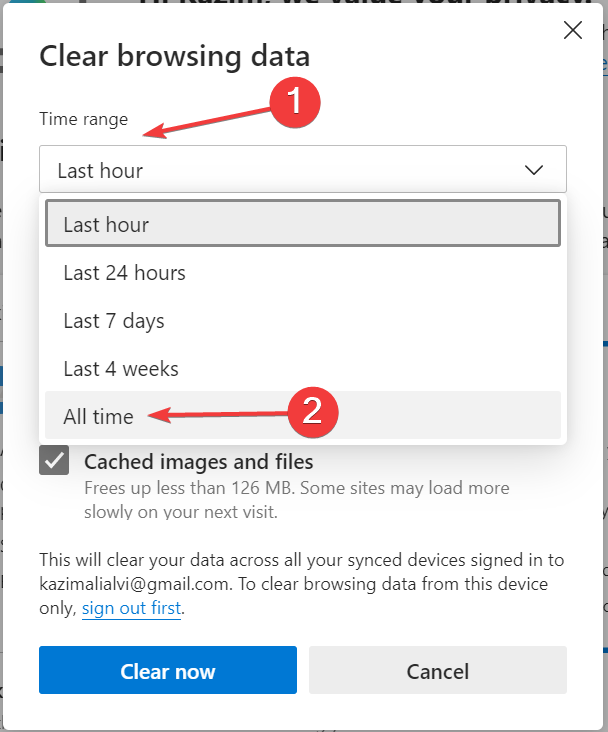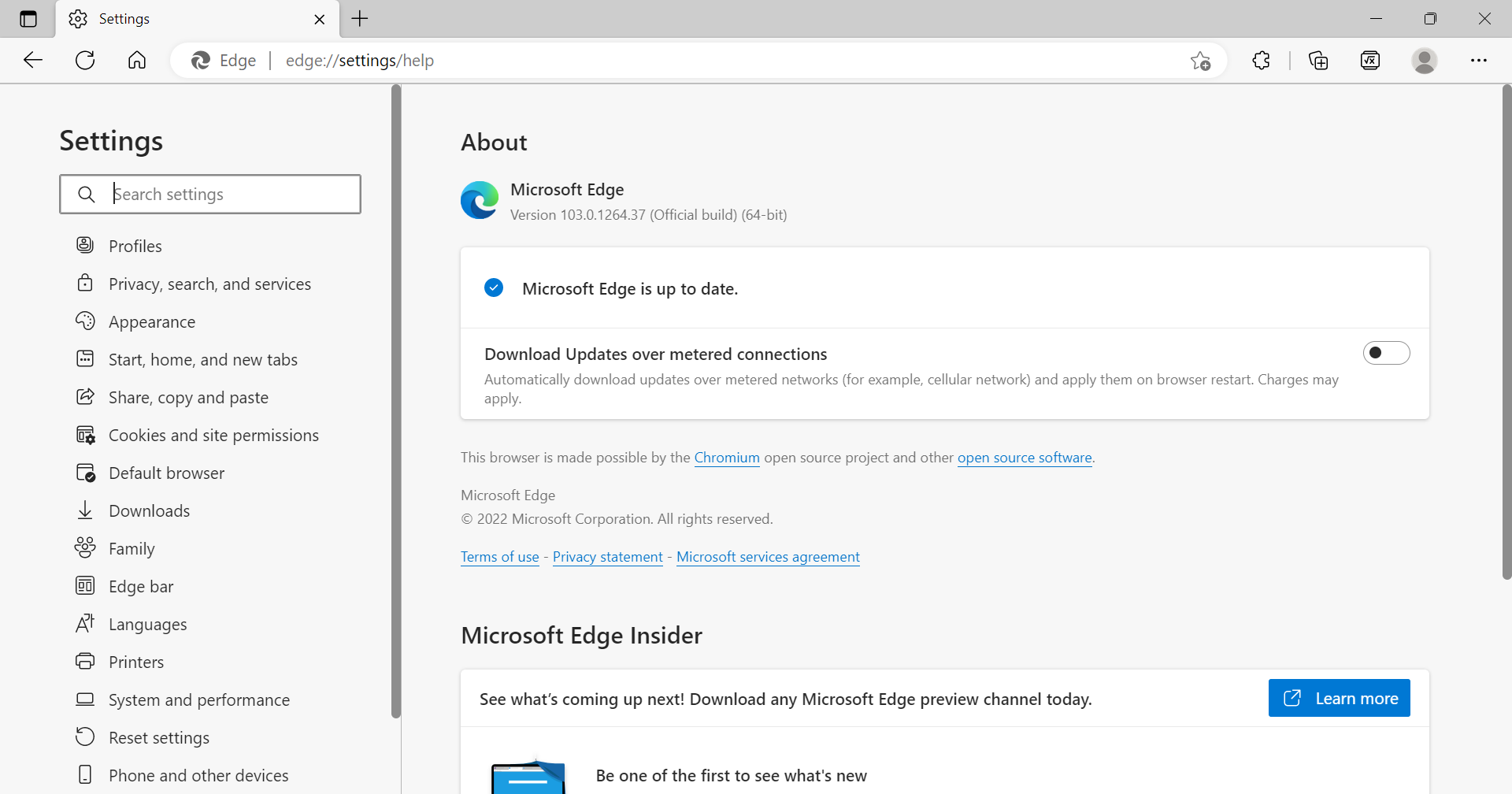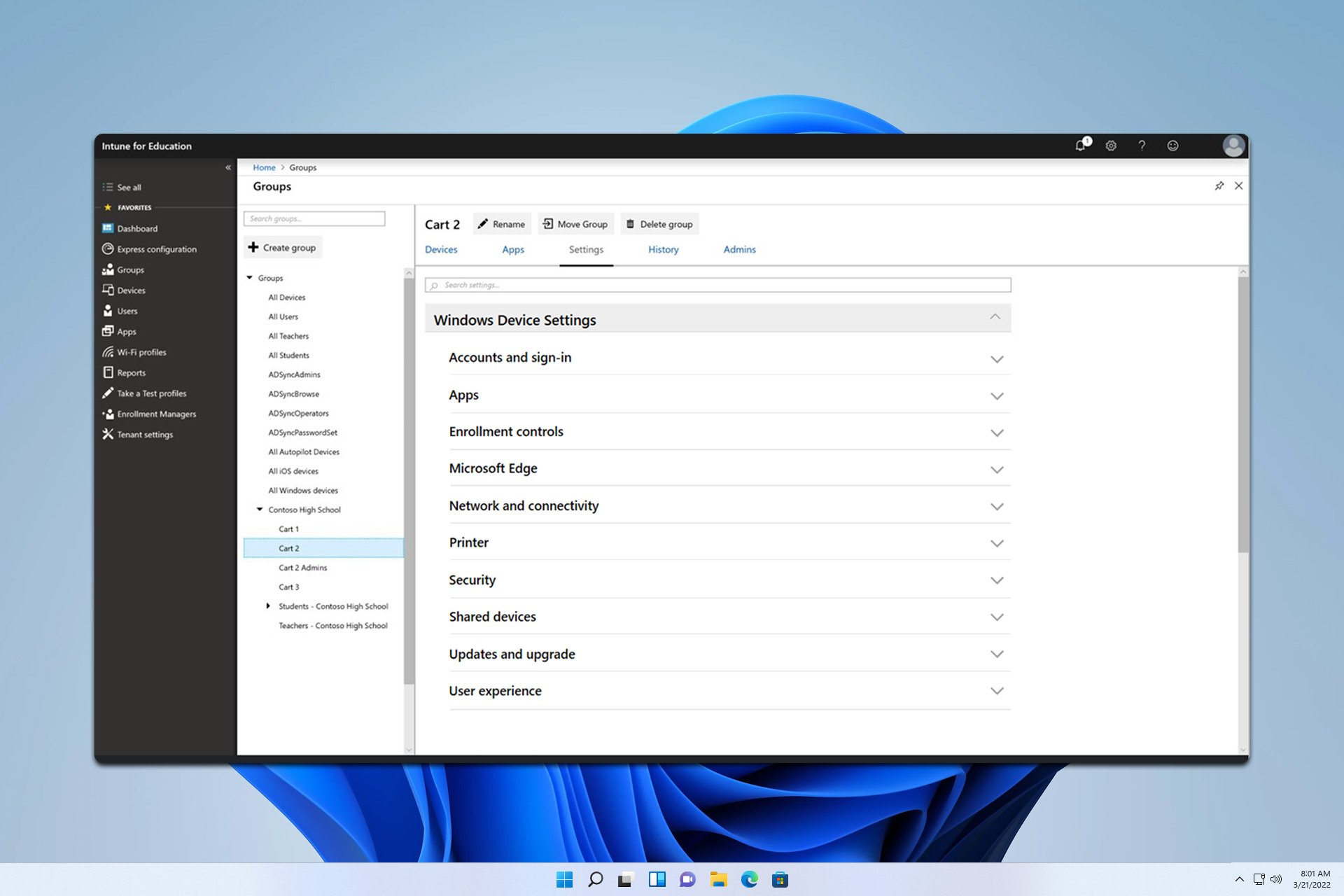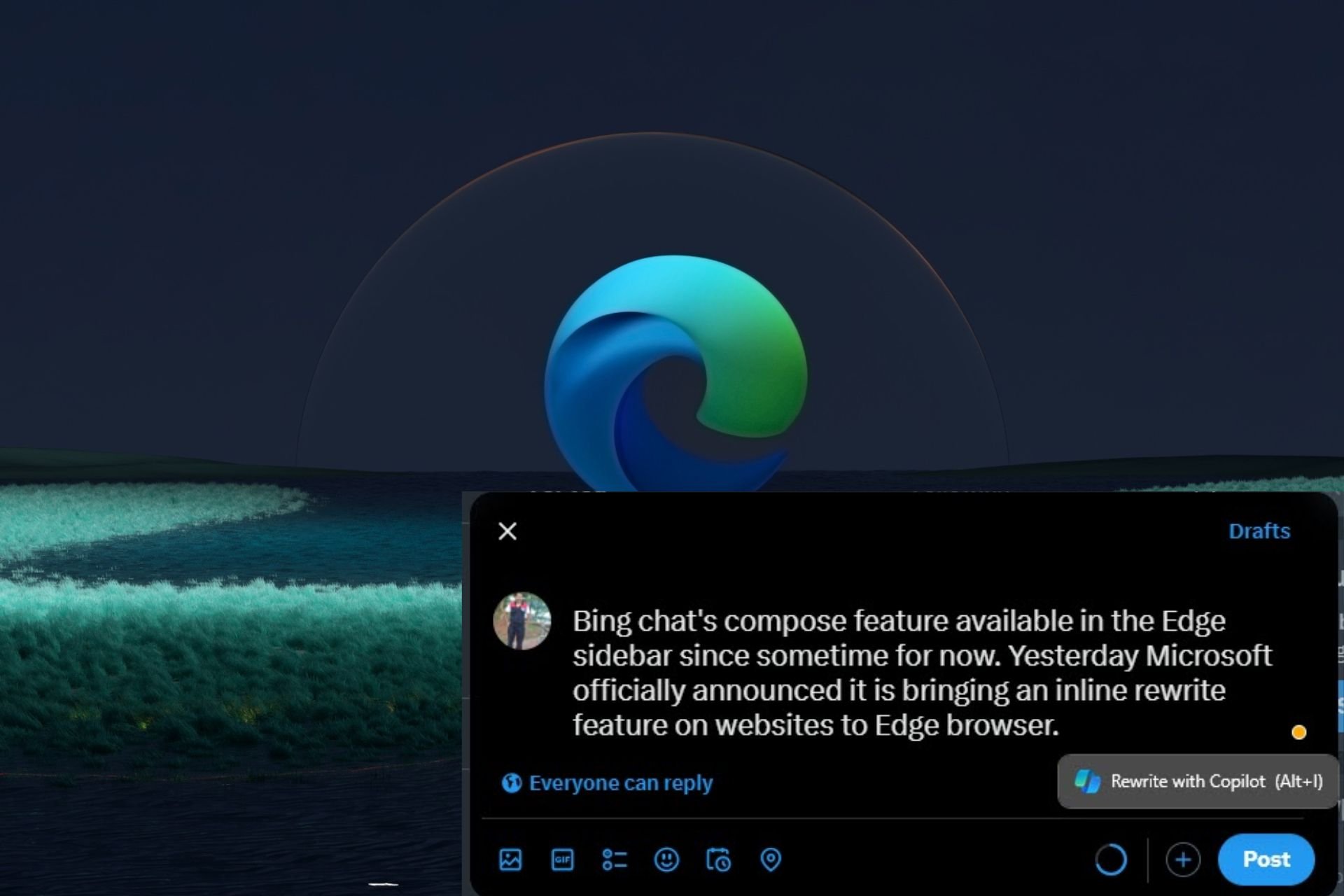Microsoft Edge High CPU Usage: Fix & Stop It From Using Too Much
Reduce Microsoft Edge's high CPU usage issue with these solutions
6 min. read
Updated on
Read our disclosure page to find out how can you help Windows Report sustain the editorial team Read more
Key notes
- Microsoft Edge is a Chromium-based web browser designed to replace Internet Explorer.
- If Microsoft Edge uses too much CPU, you can choose an alternate browser from our list.
- Also, you can disable/remove third-party extensions or try the other methods mentioned in this guide.

Edge, Microsoft’s recommended option, is one of the most used browsers on Windows devices, but it has its fair share of flaws. One commonly reported problem concerns the extremely high CPU usage of the process belonging to Microsoft Edge.
After years of widely unpopular Internet Explorer dominance, Microsoft introduced Edge accompanying Windows 10, and just when users were about to make the switch, specific issues popped up.
But this one is easy to fix. Please read the following sections to learn about Microsoft Edge’s high CPU usage in Windows 10/11 and its most effective solutions.
How do I fix high CPU usage on Microsoft Edge?
1. Disable Startup boost in Edge
- Launch Edge, paste the following path in the address bar, and hit Enter:
edge://settings/system - Disable the toggle for Startup boost.
- Then, restart the browser for the changes to come into effect.
Often, it’s the Startup boost feature behind high CPU usage in Edge, and disabling it did the trick for most users.
2. Scan for malware
- Press Windows + S to launch the Search menu, type Windows Security, and open it.
- Click on Virus & threat protection.
- Click on Scan options.
- Select Full scan, and then click on Scan now at the bottom.
The presence of a malicious infection might be another possible reason. However, remember that we’re roaming in the dark and trying to cover all possible bases.
Even though this is an unlikely scenario, there are slight chances that some PUP was unwillingly installed. Malware that installs adware, toolbars, or spyware is known as a Potentially Unwanted Program (PUP).
To avoid this, we advise scanning for malware and, in addition, using a specialized anti-PUP tool, such as ESET HOME Security Essential to detect and remove all problematic apps.
This tool allows you to run more in-depth scans and provides you with modern security features like a built-in firewall, real-time threat scanner, and even an anti-ransomware feature, keeping your device always safe.
⇒ Get ESET HOME Security Essential
3. Clear the browser’s cache
- Open Edge, and press Ctrl + Shift + Delete to launch the Clear browsing data box.
- Click on the Time range dropdown menu, and select All time.
- Tick the checkboxes for Browsing history, Cookies and other site data, Cached images and files, and then click on Clear now at the bottom.
Corrupt browsing data is likely to cause Microsoft Edge 100% CPU usage. So it’s best to clear it all and check if the problem is resolved. Other ways of clearing cache and cookies are in our detailed article. In case it persists, head to the following method.
4. Run Edge without extensions
- Open Edge, click on the Extensions icon in the Toolbar and click on Manage extensions.
- Click on the Remove button under the individual extensions.
- Again, click Remove in the confirmation prompt.
Browser add-ons or extensions are of the utmost importance for so many users. Therefore, every severe browser developer must make them available, starting with the ad-blockers and moving to various helpful utilities.
Edge started without extensions, but now that it has them, users are pretty satisfied with what Microsoft’s new browser offers.
However, even though they pass a standard inspection, they still come from a third-party developer, and thus, they might or might not be well-optimized.
With that in mind, another viable troubleshooting step is to disable all extensions and look for changes. Later, you can use a system of elimination to find out which one is causing the high CPU usage in Edge and memory leaks.
5. Update Microsoft Edge
- Launch Edge, click on the ellipsis near the top-right, hover the cursor over Help and feedback, and click on About Microsoft Edge.
- If an update is available, it will automatically be installed.
If nothing else works, you may try updating Microsoft Edge to fix high CPU usage. However, most of the methods listed earlier will solve the problem.
Why is my CPU usage so high when using Edge?
The issue generally arises when you have several extensions installed. Even one problematic extension can cause high CPU usage in Edge, and opening multiple tabs will automatically increase CPU usage.
Also, certain websites, such as Google Earth, require CPU rendering, which increases the usage percentage. In addition, the Startup boost feature is known to cause the problem.
Is Edge resource-hungry?
Edge is certainly not a resource-hungry browser and performs way better than Google Chrome in this regard. So when you witness high CPU usage by Microsoft Edge Chromium, it’s due to a bunch of issues.
Also, Edge has a built-in feature that removes ads that consume high resources. When that happens, you will see the message that Microsoft Edge removed this ad because it was using too many resources on your computer.
Which browser has the lowest CPU usage?
Regarding low CPU usage, Opera stands out from the crowd. No matter the number of extensions installed or the tabs open, it will not affect the system’s speed or create conflicts.
Opera was developed so that the browser consumes much less resources without compromising performance.
Does Chrome or Edge use more CPU?
You will find multiple internet tests involving Microsoft Edge and Google Chrome, where both were tested for CPU usage.
In almost all the tests, Google Chrome used more CPU than Microsoft Edge. Chrome’s CPU usage was 30-40% higher than Edge’s. Several user reports show crashes and system slowdowns are more evident when using Google Chrome.
How do I fix Microsoft Edge’s high CPU usage on Windows 11?
- Restart your PC.
- Run SFC Scan or DISM commands.
- Install the latest Windows update.
- Check if Microsoft Edge is running the latest version or not.
- Clear Microsoft Edge cache and cookies.
- Disable background apps.
- Scan your PC for viruses or malware.
- Disable all Edge extensions and check if any extension is the culprit.
How do I stop Edge from running in the background?
- Launch Edge, paste the following path in the address bar, and hit Enter:
edge://settings/system - Disable the toggle for Continue running background extensions and apps when Microsoft Edge is closed.
That’s how you can easily disable Edge and its installation extensions from running in the background.
Is it safe to uninstall Microsoft Edge?
The traditional way of uninstalling an app from your Windows PC does not apply to Microsoft Edge, an official Microsoft product.
Microsoft has also mentioned that you can’t uninstall Edge from your PC because it is the default web browser recommended by the OS developers. The OS also allows them to install other browsers and use them freely.
To uninstall Microsoft Edge, you need some command-line magic, which is a topic for a different discussion. However, Uninstalling Microsoft Edge will not benefit you and could instead cause some complications.
Also, find out how to fix the Out of Memory error code in Microsoft Edge. If you have any other queries or know of a method not listed here, comment below.


